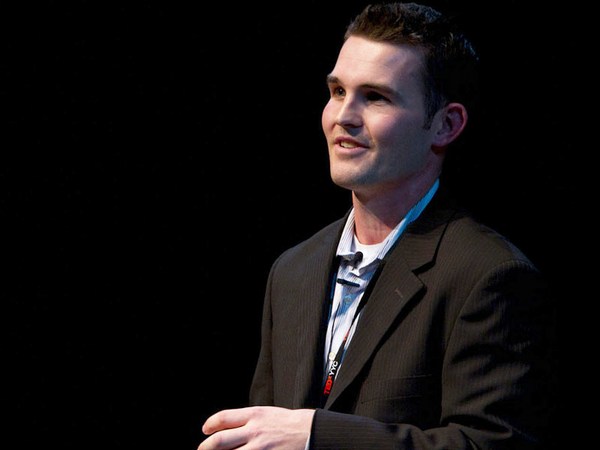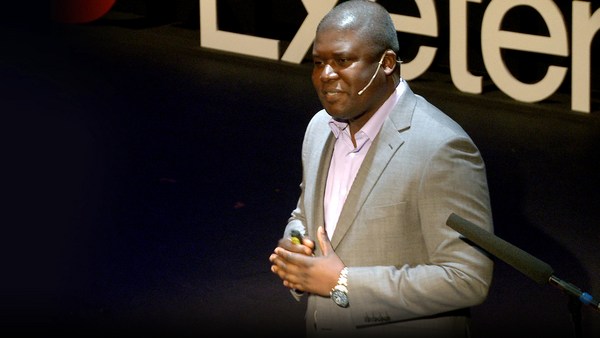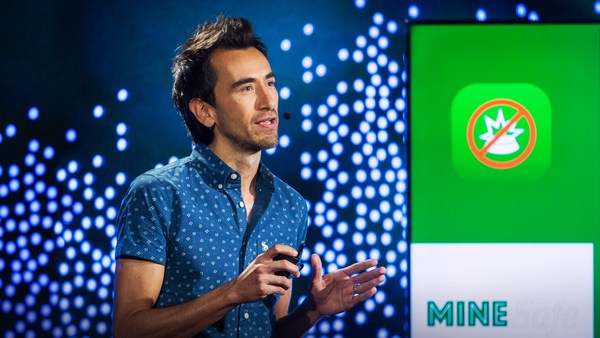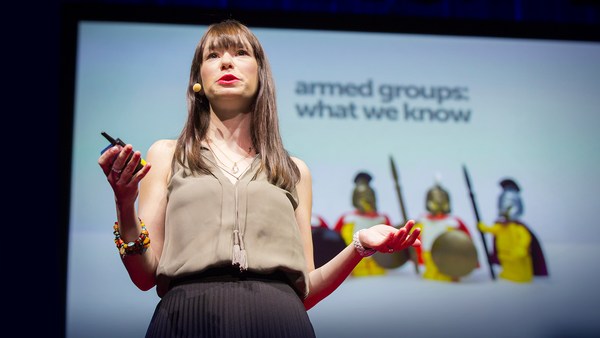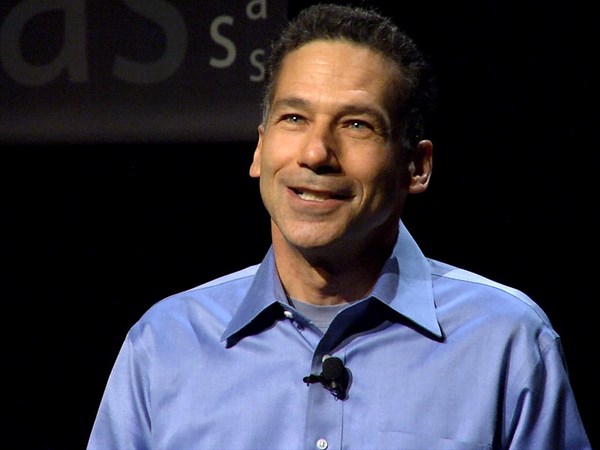I want to speak about a forgotten conflict. It's a conflict that rarely hits the headlines. It happens right here, in the Democratic Republic of Congo.
Now, most people outside of Africa don't know much about the war in Congo, so let me give you a couple of key facts. The Congolese conflict is the deadliest conflict since World War II. It has caused almost four million deaths. It has destabilized most of Central Africa for the past 18 years. It is the largest ongoing humanitarian crisis in the world.
That's why I first went to Congo in 2001. I was a young humanitarian aid worker, and I met this woman who was my age. She was called Isabelle. Local militias had attacked Isabelle's village. They had killed many men, raped many women. They had looted everything. And then they wanted to take Isabelle, but her husband stepped in, and he said, "No, please don't take Isabelle. Take me instead." So he had gone to the forest with the militias, and Isabelle had never seen him again.
Well, it's because of people like Isabelle and her husband that I have devoted my career to studying this war that we know so little about.
Although there is one story about Congo that you may have heard. It's a story about minerals and rape. Policy statements and media reports both usually focus on a primary cause of violence in Congo -- the illegal exploitation and trafficking of natural resources -- and on a main consequence -- sexual abuse of women and girls as a weapon of war.
So, not that these two issues aren't important and tragic. They are. But today I want to tell you a different story. I want to tell you a story that emphasizes a core cause of the ongoing conflict. Violence in Congo is in large part driven by local bottom-up conflicts that international peace efforts have failed to help address.
The story starts from the fact that not only is Congo notable for being the world's worst ongoing humanitarian crisis, but it is also home to some of the largest international peacebuilding efforts in the world. Congo hosts the largest and most expensive United Nations peacekeeping mission in the world. It was also the site of the first European-led peacekeeping mission, and for its first cases ever, the International Criminal Court chose to prosecute Congolese warlords. In 2006, when Congo held the first free national elections in its history, many observers thought that an end to violence in the region had finally come. The international community lauded the successful organization of these elections as finally an example of successful international intervention in a failed state.
But the eastern provinces have continued to face massive population displacements and horrific human rights violations. Shortly before I went back there last summer, there was a horrible massacre in the province of South Kivu. Thirty-three people were killed. They were mostly women and children, and many of them were hacked to death. During the past eight years, fighting in the eastern provinces has regularly reignited full-scale civil and international war. So basically, every time we feel that we are on the brink of peace, the conflict explodes again.
Why? Why have the massive international efforts failed to help Congo achieve lasting peace and security? Well, my answer to this question revolves around two central observations. First, one of the main reasons for the continuation of violence in Congo is fundamentally local -- and when I say local, I really mean at the level of the individual, the family, the clan, the municipality, the community, the district, sometimes the ethnic group. For instance, you remember the story of Isabelle that I told you. Well, the reason why militias had attacked Isabelle's village was because they wanted to take the land that the villagers needed to cultivate food and to survive.
The second central observation is that international peace efforts have failed to help address local conflicts because of the presence of a dominant peacebuilding culture. So what I mean is that Western and African diplomats, United Nations peacekeepers, donors, the staff of most nongovernmental organizations that work with the resolution of conflict, they all share a specific way of seeing the world. And I was one of these people, and I shared this culture, so I know all too well how powerful it is. Throughout the world, and throughout conflict zones, this common culture shapes the intervener's understanding of the causes of violence as something that is primarily located in the national and international spheres. It shapes our understanding of the path toward peace as something again that requires top-down intervention to address national and international tensions. And it shapes our understanding of the roles of foreign actors as engaging in national and international peace processes. Even more importantly, this common culture enables international peacebuilders to ignore the micro-level tensions that often jeopardize the macro-level settlements.
So for instance, in Congo, because of how they are socialized and trained, United Nations officials, donors, diplomats, the staff of most nongovernmental organizations, they interpret continued fighting and massacres as a top-down problem. To them, the violence they see is the consequence of tensions between President Kabila and various national opponents, and tensions between Congo, Rwanda and Uganda. In addition, these international peacebuilders view local conflicts as simply the result of national and international tensions, insufficient state authority, and what they call the Congolese people's so-called inherent penchant for violence.
The dominant culture also constructs intervention at the national and international levels as the only natural and legitimate task for United Nations staffers and diplomats. And it elevates the organization of general elections, which is now a sort of cure-all, as the most crucial state reconstruction mechanism over more effective state-building approaches. And that happens not only in Congo but also in many other conflict zones.
But let's dig deeper, into the other main sources of violence. In Congo, continuing violence is motivated not only by the national and international causes but also by longstanding bottom-up agendas whose main instigators are villagers, traditional chiefs, community chiefs or ethnic leaders. Many conflicts revolve around political, social and economic stakes that are distinctively local. For instance, there is a lot of competition at the village or district level over who can be chief of village or chief of territory according to traditional law, and who can control the distribution of land and the exploitation of local mining sites. This competition often results in localized fighting, for instance in one village or territory, and quite frequently, it escalates into generalized fighting, so across a whole province, and even at times into neighboring countries.
Take the conflict between Congolese of Rwandan descent and the so-called indigenous communities of the Kivus. This conflict started in the 1930s during Belgian colonization, when both communities competed over access to land and to local power. Then, in 1960, after Congolese independence, it escalated because each camp tried to align with national politicians, but still to advance their local agendas. And then, at the time of the 1994 genocide in Rwanda, these local actors allied with Congolese and Rwandan armed groups, but still to advance their local agendas in the provinces of the Kivus. And since then, these local disputes over land and local power have fueled violence, and they have regularly jeopardized the national and international settlements.
So we can wonder why in these circumstances the international peacebuilders have failed to help implement local peacebuilding programs. And the answer is that international interveners deem the resolution of grassroots conflict an unimportant, unfamiliar, and illegitimate task. The very idea of becoming involved at the local level clashes fundamentally with existing cultural norms, and it threatens key organizational interests. For instance, the very identity of the United Nations as this macro-level diplomatic organization would be upended if it were to refocus on local conflicts. And the result is that neither the internal resistance to the dominant ways of working nor the external shocks have managed to convince international actors that they should reevaluate their understanding of violence and intervention. And so far, there have been only very few exceptions. There have been exceptions, but only very few exceptions, to this broad pattern.
So to wrap up, the story I just told you is a story about how a dominant peacebuilding culture shapes the intervener's understanding of what the causes of violence are, how peace is made, and what interventions should accomplish. These understandings enable international peacebuilders to ignore the micro-level foundations that are so necessary for sustainable peace. The resulting inattention to local conflicts leads to inadequate peacebuilding in the short term and potential war resumption in the long term. And what's fascinating is that this analysis helps us to better understand many cases of lasting conflict and international intervention failures, in Africa and elsewhere. Local conflicts fuel violence in most war and post-war environments, from Afghanistan to Sudan to Timor-Leste, and in the rare cases where there have been comprehensive, bottom-up peacebuilding initiatives, these attempts have been successful at making peace sustainable. One of the best examples is the contrast between the relatively peaceful situation in Somaliland, which benefited from sustained grassroots peacebuilding initiatives, and the violence prevalent in the rest of Somalia, where peacebuilding has been mostly top-down. And there are several other cases in which local, grassroots conflict resolution has made a crucial difference.
So if we want international peacebuilding to work, in addition to any top-down intervention, conflicts must be resolved from the bottom up. And again, it's not that national and international tensions don't matter. They do. And it's not that national and international peacebuilding isn't necessary. It is. Instead, it is that both macro-level and micro-level peacebuilding are needed to make peace sustainable, and local nongovernmental organizations, local authorities and civil society representatives should be the main actors in the bottom-up process.
So of course, there are obstacles. Local actors often lack the funding and sometimes the logistical means and the technical capacity to implement effective, local peacebuilding programs. So international actors should expand their funding and support for local conflict resolution.
As for Congo, what can be done? After two decades of conflict and the deaths of millions, it's clear that we need to change our approach. Based on my field research, I believe that international and Congolese actors should pay more attention to the resolution of land conflict and the promotion of inter-community reconciliation. So for instance, in the province of the Kivus, the Life and Peace Institute and its Congolese partners have set up inter-community forums to discuss the specifics of local conflicts over land, and these forums have found solutions to help manage the violence. That's the kind of program that is sorely needed throughout eastern Congo. It's with programs like this that we can help people like Isabelle and her husband.
So these will not be magic wands, but because they take into account deeply rooted causes of the violence, they could definitely be game-changers.
Thank you.
(Applause)
